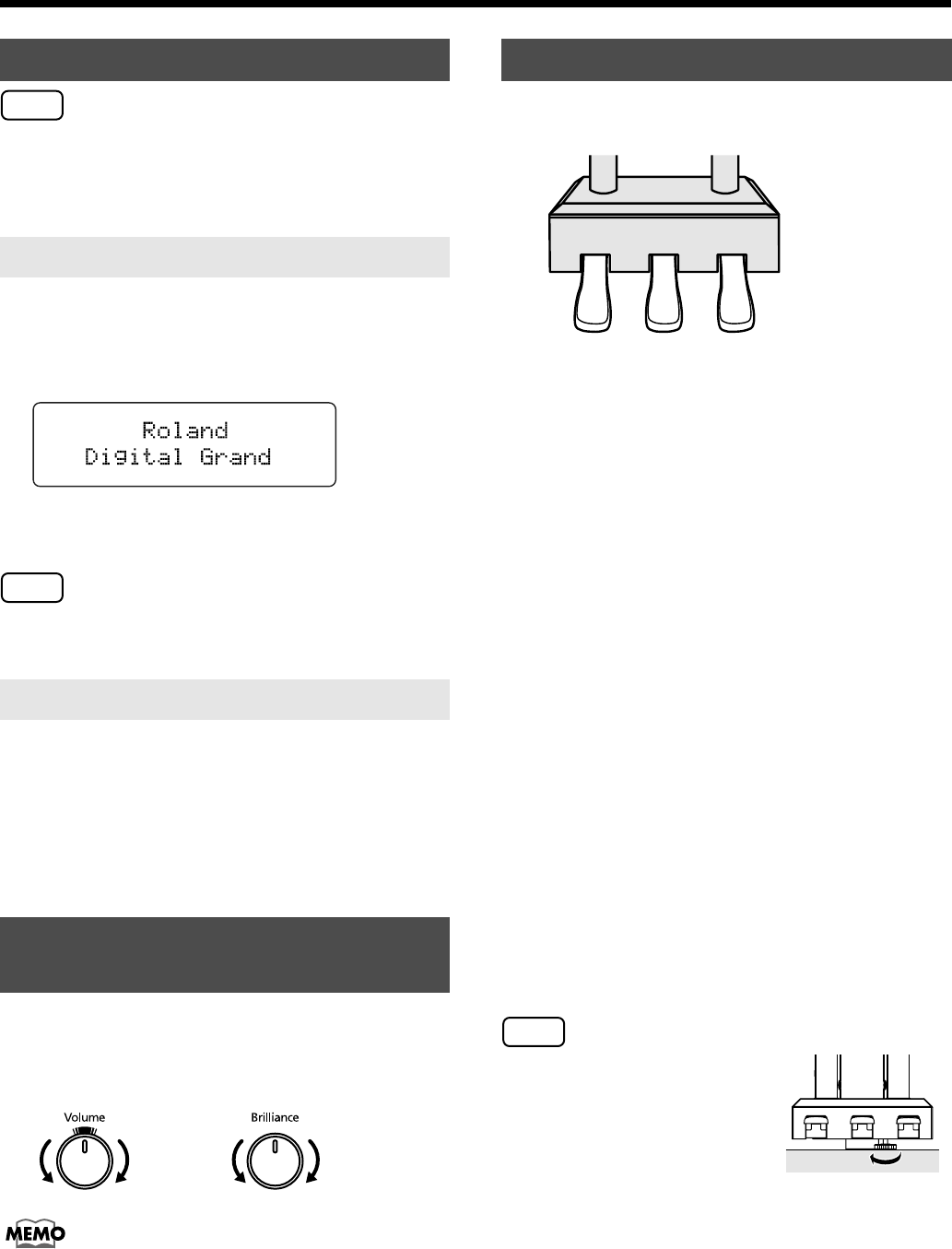
16
Before You Start Playing
NOTE
Once the connections have been completed (p. 15), turn
on power to your various devices in the order specified.
By turning on devices in the wrong order, you risk
causing malfunction and/or damage to speakers and
other devices.
1.
Turn the [Volume] knob all the way down.
2.
Press the [Power] switch.
When you turn on the power to the RG-1, the front panel
display appears as shown below.
fig.00-0391d
After a few seconds, you will be able to play the
keyboard to produce sound.
Use the [Volume] knob to adjust the volume.
NOTE
This unit is equipped with a protection circuit. A brief
interval (a few seconds) after power up is required
before the unit will operate normally.
1.
Turn the [Volume] knob all the way to the left.
2.
Press the [Power] switch.
The front panel display goes blank, and the power is
turned off.
* If you need to turn off the power completely, first turn off the
[Power] switch, then unplug the power cord from the power
outlet. Refer to “Power Supply” (p. 5).
1.
Turn the [Volume] knob to adjust the overall
volume.
2.
Turn the [Brilliance] knob to adjust the
brightness of the sound.
fig.00-0400
The mark at the top of the [Volume] knob indicates the
volume level typically produced by an acoustic piano.
This is usually the most appropriate volume for your
piano performances.
The pedals have the following functions, and are used
mainly for piano performance.
fig.00-0410
Damper pedal (right pedal)
While this pedal is pressed, notes will be sustained even
after you take your fingers off the keys.
The length of the sustain changes subtly according to the
extent to which the pedal is depressed.
On an acoustic piano, holding down the damper pedal
will allow the remaining strings to resonate in sympathy
with the sounds that you played from the keyboard,
adding a rich resonance.
The RG-1 simulates this Damper Resonance.
→
You can change the amount of resonance applied with the
damper pedal. Please refer to “Adjusting Resonance when the
Damper Pedal is Depressed (Damper Resonance)” (p. 26).
Sostenuto pedal (center pedal)
This pedal sustains only the sounds of the keys that were
already played when you pressed the pedal.
Soft pedal (left pedal)
When you hold down this pedal and play the keyboard,
the sound will have a softer tone.
The softness of the tone can be varied subtly by the
depth to which you press the pedal.
→
You can assign functions to the left and center pedals. Refer to
“Assigning Functions to Pedals” (p. 69).
NOTE
If you feel that the pedal is
unstable (for example if you’ve
moved the RG-1 to a different
location), you can adjust the
adjuster located on the bottom
of the pedals as follows.
Rotate the adjustor to lower it
so that it is in firm contact with
the floor. If there is a gap between the pedals and the
floor, the pedals may be damaged. In particular when
placing the instrument on carpet, adjust this so that the
pedals firmly contact the floor.
Turning the Power On and Off
Turning On the Power
Turning Off the Power
Adjusting the Sound’s
Volume and Brilliance
Min Max Mellow
Bright
About the Pedals
Soft Pedal
Sostenuto Pedal
Damper Pedal
Adjuster
RG-1_e.book 16 ページ 2008年4月8日 火曜日 午後2時36分


















